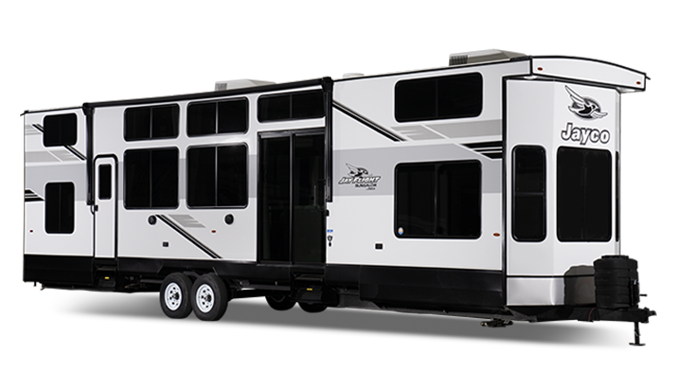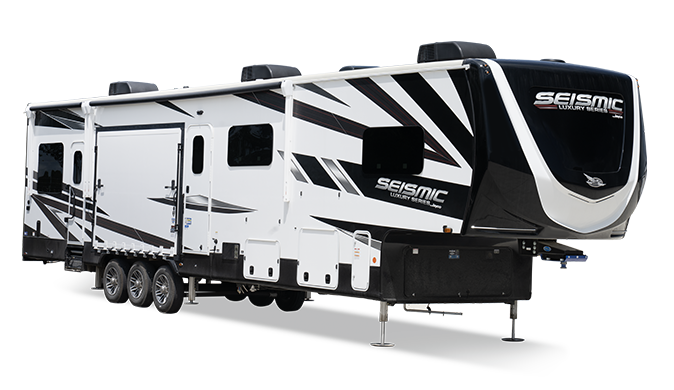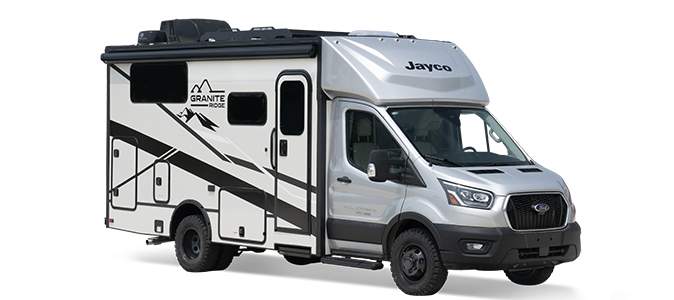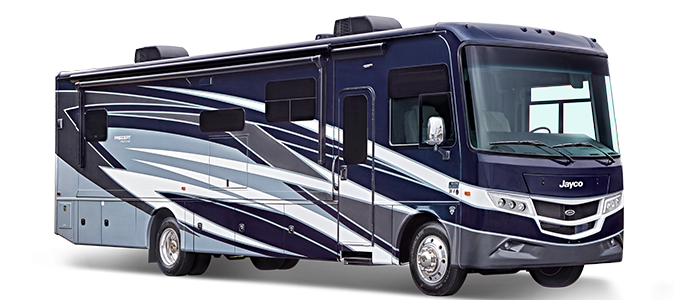JEREMY & STEPHANIE PUGLISI
Jeremy and Stephanie Puglisi are the co-hosts of The RV Atlas podcast and the authors of See You at the Campground and Idiot’s Guide: RV Vacations. They like to hitch up their RV every chance they get and head out for adventures with Sweet Maggie the Camping Dog and their three sons, Max, Theo and Wes.
We bought our first Toy Hauler two years ago, but Stephanie and I were already veteran RV owners. We were comfortable in our groove. I drove and she navigated, and it all just clicked.
Hitching and unhitching; towing and backing up; basic RV maintenance; picking the best routes and navigating gas stations; surviving in a small space with three rambunctious boys in the back seat–we had all of that stuff completely wired. Our RV adventures had been nearly drama free for eight years.
We drove a Jayco White Hawk 29SQB, just under 33 feet long with a dry weight around 6,000 pounds. It towed like a dream and was incredibly reliable. We loved every inch of that rig. But after six years, we needed more space.
Our three boys were growing. Stephanie wanted more privacy in the master bedroom, and I wanted more room to bring gear like kayaks and stand up paddle boards. The White Hawk had taken us to some magical places, like the Great Smoky Mountains and the rocky coast of Maine, but we it was time to move on.








































.png)
.png)
.png)
